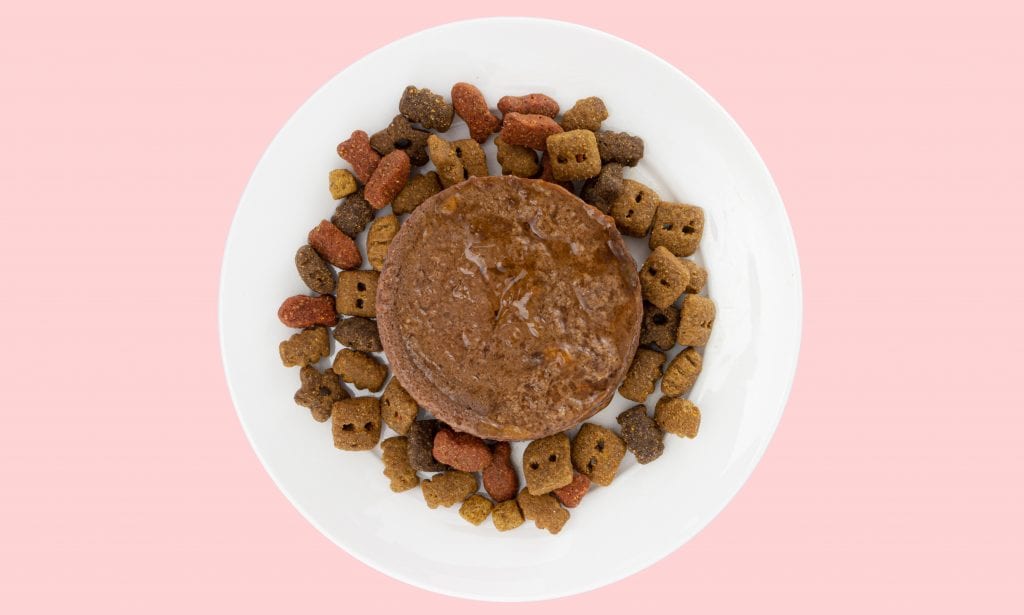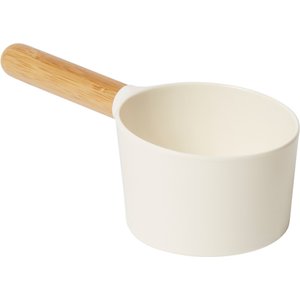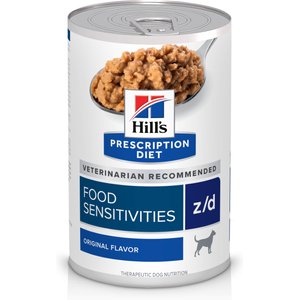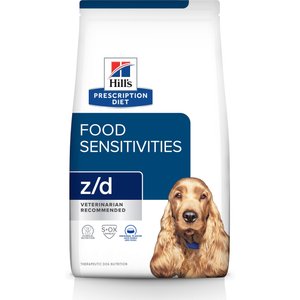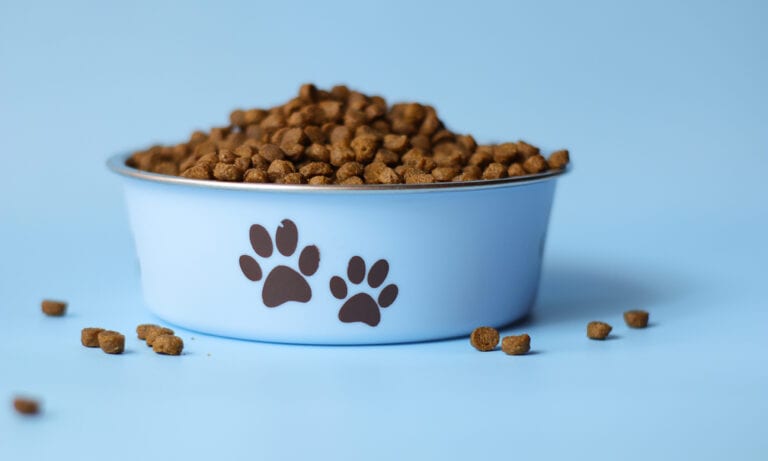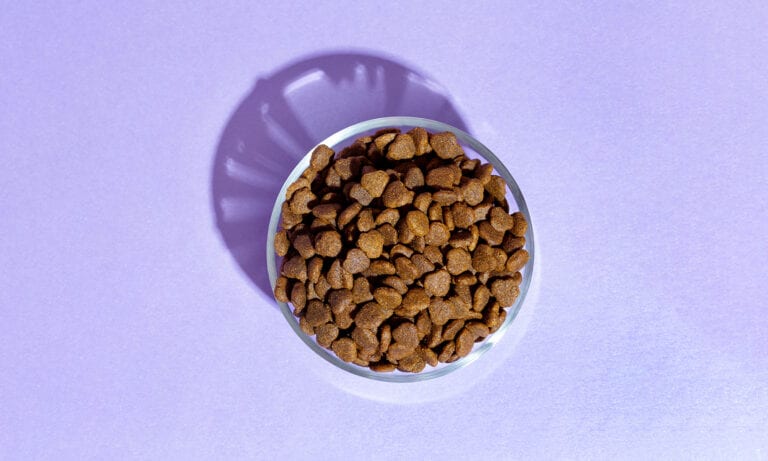Is it safe to mix wet and dry food for your dog or cat? Is it even worth mixing the two? Yes–and yes!
Here are the benefits of mixing wet and dry dog food or cat food, when it makes sense to mix wet and dry food for your pet, and how to do it properly.
Can I Mix Wet and Dry Pet Food?
Benefits of Mixing Wet and Dry Pet Food
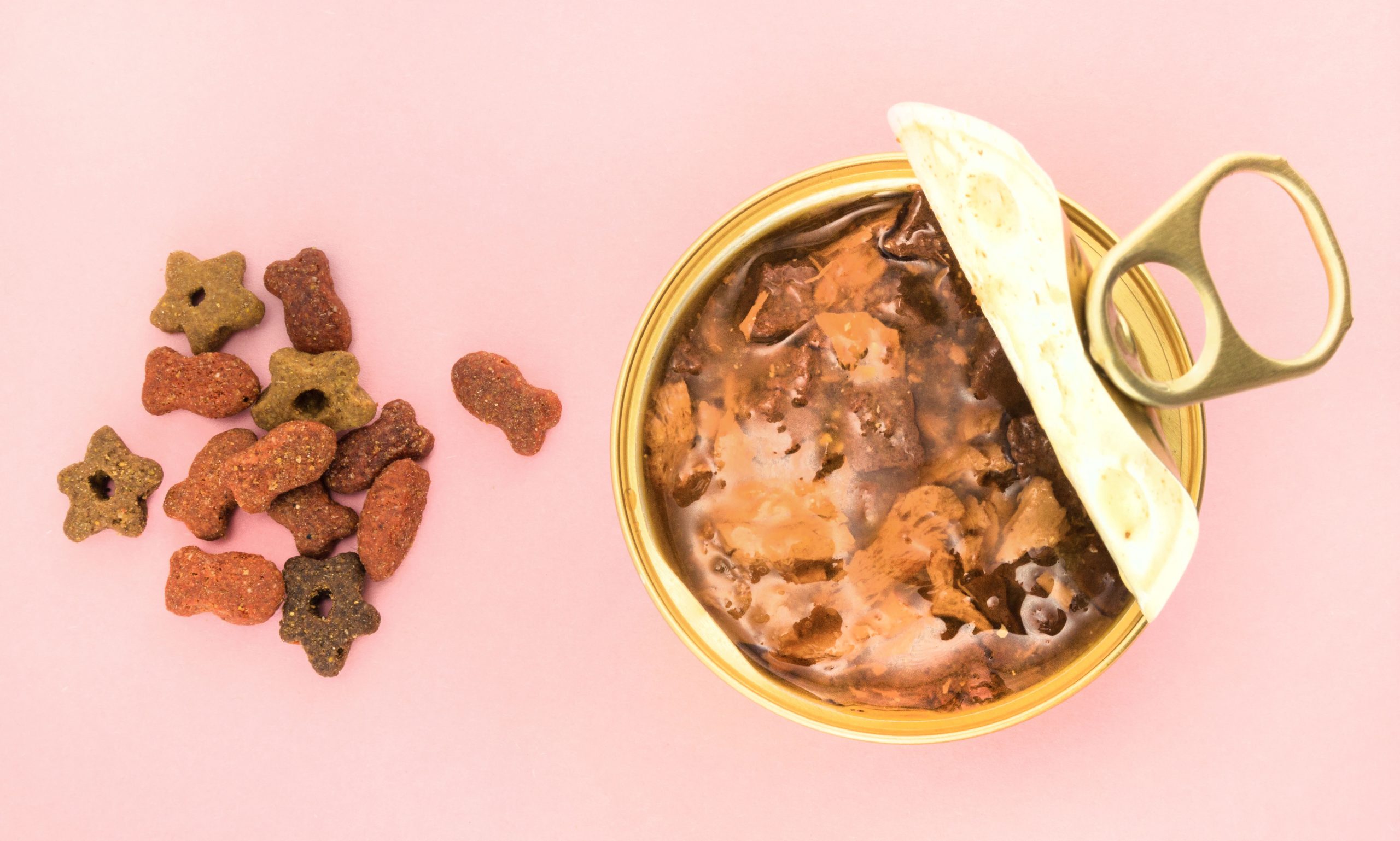
It Increases Palatability and Encourages Picky Eaters.
Mixing wet food into dry food can make the diet more palatable for many pets. If your pet is not eating their dry food, then wet food may be the “secret sauce” you need to stimulate their appetite.
While the aroma might not be too pleasant for us pet parents, wet food tends to both smell and taste better than dry. Mixing a little wet food in with a dog or cat’s kibble can encourage picky eaters to consume more.
It Helps Hydrate.
Feeding your pet wet food increases their water intake. Moisture content is the main difference between wet and dry pet foods. Dry diets contain only about 10 to 12 percent water while wet formulations are generally between 75 percent and 78 percent water.
If your pet needs to take in extra water, adding in some wet food to their typical dry food diet is a simple way to up their hydration level.
It Helps With Weight Management.
Adding wet food to your furry friend’s dry can help with weight loss because the extra water causes pets’ stomachs to feel fuller and leaves them more satisfied after their meals.
Do you have the opposite concern? If weight gain is on your radar and your pet is on a wet food diet, adding in some dry food can provide extra calories for dogs who struggle with eating enough wet food to meet their energy requirements. Dry food is nutrient dense since it is less diluted with moisture.
It’s a Cost-Effective Combination.
You may be wary of switching from dry food to wet food completely because wet food is generally more expensive than dry food of comparable quality. That’s the beauty of mixing the two together. Your pet can reap the benefits of wet food without breaking the bank.
How to Mix Dry Food with Wet Food
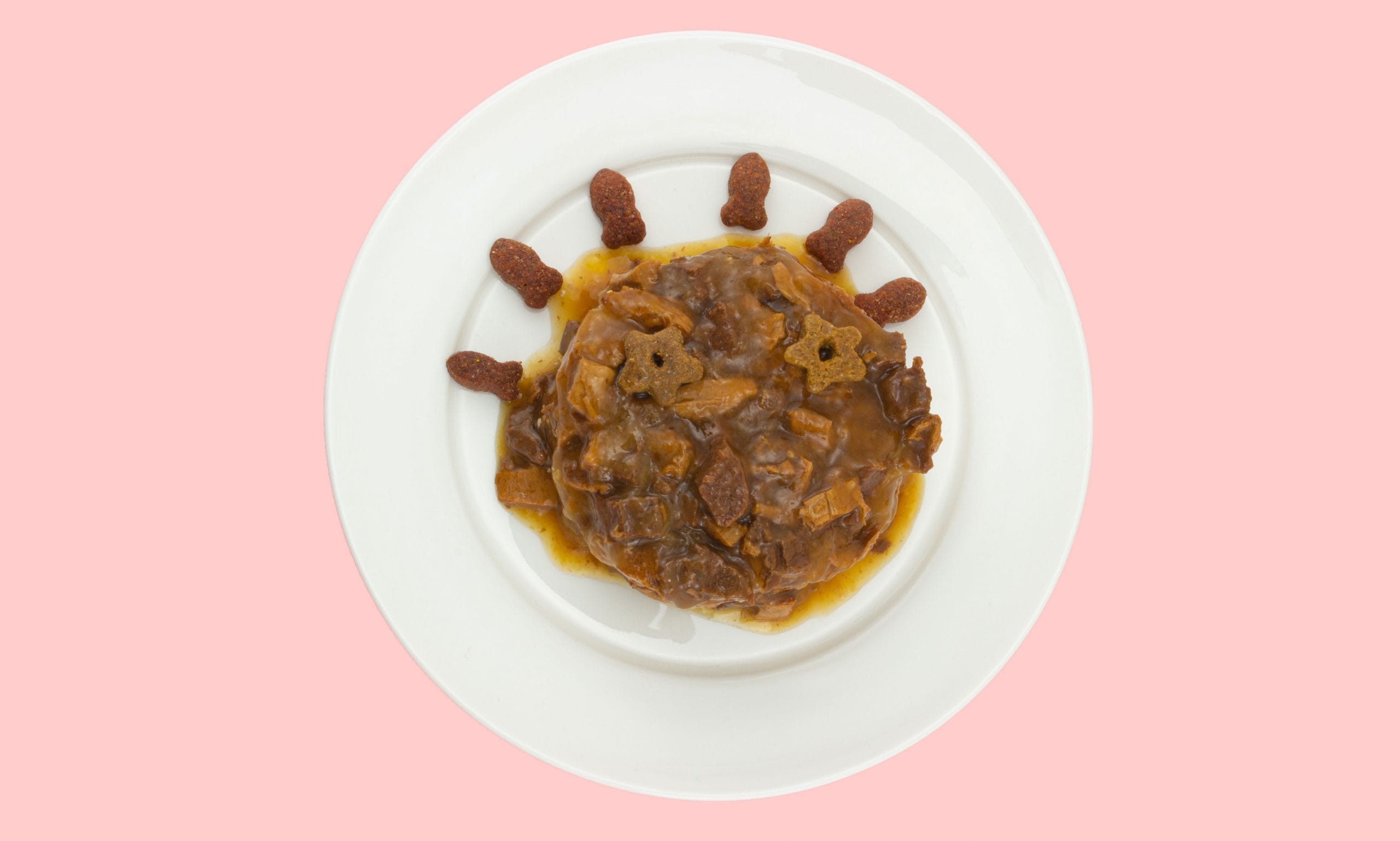
For example, if you’re preserving a budget or trying to help your pet gain weight, you could mix a ratio of 3/4 dry food and 1/4 wet food.
Dogs and cats can eat a combo of wet and dry food once they’re weaned.
Tips for Mixing Canned Dog Food and Cat Food with Dry Kibble
- Speak with your veterinarian about what type of food and how many calories per day your pet should be eating so you’re certain you’re feeding enough to meet your pet’s nutritional needs, but not too much. (If you’re not comfortable calculating the ratio of wet to dry pet food you should offer at mealtime when you’re mixing, they’ll help with that, too.)
- Measure your pet’s food with an appropriate measuring device.
- Consider shelf life. A mix of wet and dry food should be discarded within 4 hours after it has been put out at room temperature. You can either make a new serving for each meal or make a bigger batch in the morning, cover the extra servings for the day, and place them in the refrigerator.
- Once they’re weaned, mixing foods can be done for a pet of any age, from puppies and kittens to adult dogs and cats, but ensure the food you’re using is for your pet’s appropriate life stage such as puppy food for your still-growing doggo.
Mixing When Your Pet Is on a Prescription Diet
If you wish to mix wet and dry foods and your pet is on a prescription diet, it’s very important that you don’t introduce a new food. Use only the prescription diet in both wet and dry forms.
- For example, if your pooch is on dry Hill’s Prescription Diet z/d Skin/Food Sensitivities dry dog food due to a food allergy, you should only mix it with Hill’s Prescription Diet z/d Skin/Food Sensitivities canned dog food–or you run the risk of negating the beneficial effect of the prescription diet.
- Similarly, if your cat is on Royal Canin Veterinary Diet Urinary SO canned cat food and your veterinarian says it’s OK to mix in a little dry, Royal Canin Veterinary Diet Urinary SO dry cat food would be your best option.
Mixing in a different type of food, even if it is labeled for weight management or urinary care, could lead to undesirable weight changes or urinary problems.
Other Helpful Facts about Wet Dog Food and Cat Food
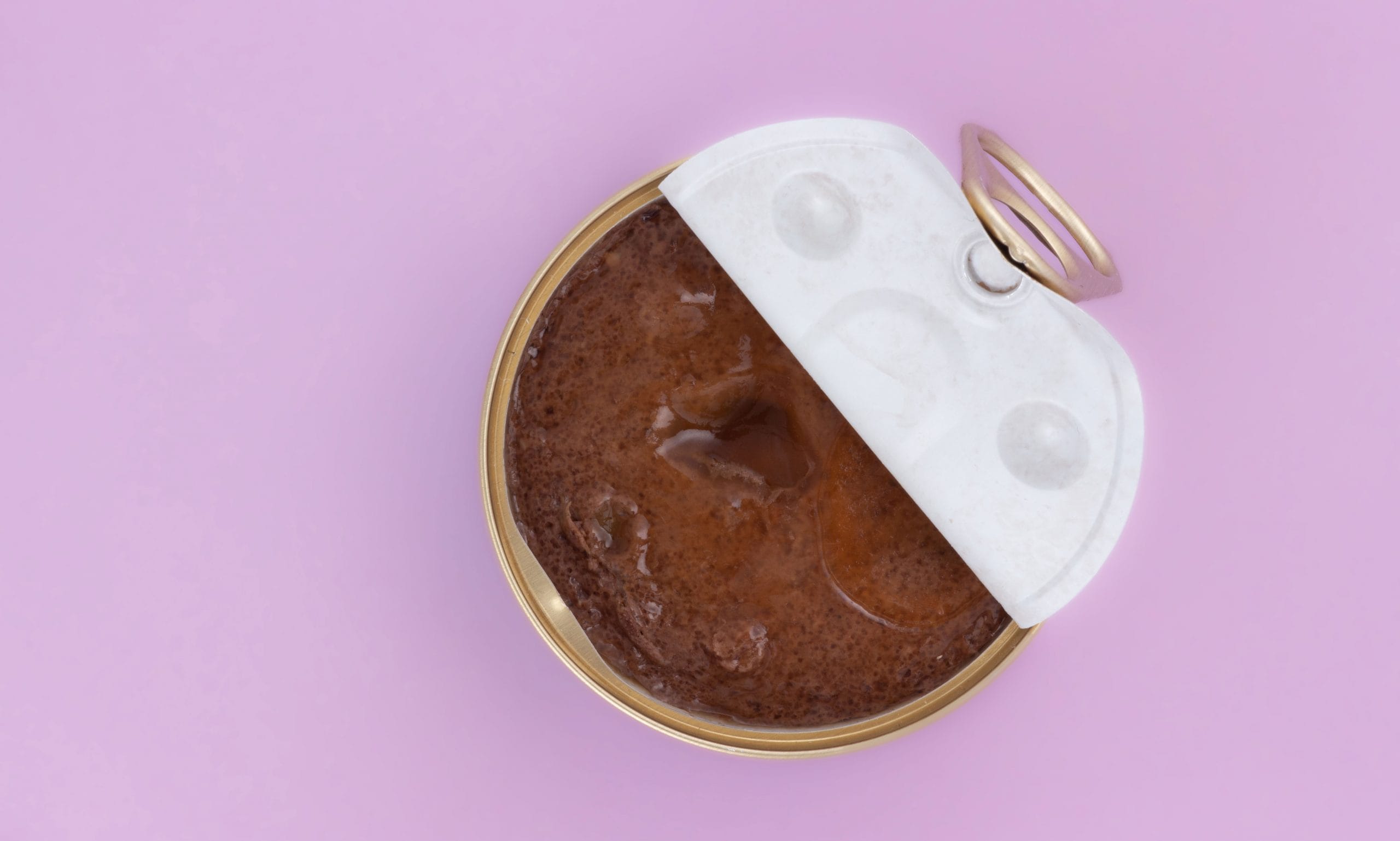
Dental Health
You don’t need to be concerned about creating any new dental issues when it comes to the type of food you select. Feeding your pooch or kitty regular dry food may not do much to keep a pet’s teeth clean, though some research indicates that larger-size kibble may be helpful. Mixing wet and dry food or even switching over entirely to wet food shouldn’t make much of a difference with your cat’s or dog’s teeth. Keep in mind we’re talking about regular food, not foods that have been designed specifically to improve dental health.
Preservatives
If you’re worried that adding some wet food into your pooch’s or kitty’s kibble ups their preservative intake, rest easy. Wet food is preserved using heat and will usually contain fewer preservatives than dry food of comparable quality. While the effects of artificial preservatives in dogs are unclear, some human studies indicate that they may be associated with health risks like chronic intestinal inflammation and metabolic disorders.
More about feeding your pet:
Share:
